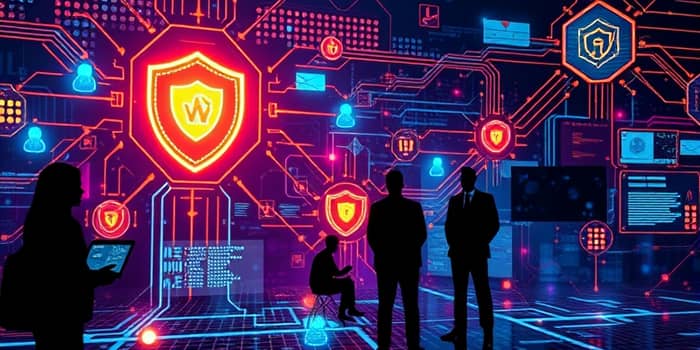
In an era defined by data breaches, ransomware, and sophisticated phishing campaigns, the cybersecurity sector stands at the forefront of global defense. As digital threats proliferate, organizations and governments alike pour unprecedented resources into safeguarding critical assets. Global cybersecurity market is booming, with projections indicating continued, robust growth. Far from being a mere reactionary field, cybersecurity has emerged as a strategic domain where innovation, investment, and talent converge to meet ever-rising challenges.
The surge in cyberattacks over the past decade has created a unique environment: one where rising threats directly fuel market expansion. With malicious actors harnessing advanced techniques and artificial intelligence, enterprises face an urgent imperative to fortify defenses. This scaling battle plays out across cloud environments, mobile workforces, and Internet of Things (IoT) ecosystems. As risk surfaces multiply, cybersecurity firms reap both the responsibility and the reward of protecting our interconnected world.
By 2025, the global cybersecurity market is estimated between $267.51 billion and $301.91 billion, and is expected to reach $434.76 billion by 2029 at a CAGR of around 12.9%. In the United States alone, spending is projected to grow from $77.2 billion in 2024 to $236.04 billion by 2034. Organizations are allocating larger portions of their budgets toward security toolkits, consulting services, and managed security offerings. Such investments underscore the dramatic increase in digital threats and the corresponding need for sophisticated protections.
Security spending climbed to an estimated $212 billion in 2025, with IDC forecasting an eventual rise to $377 billion by 2028. This relentless upward trajectory is propelled by a simple equation: more threats equal more spending. Whether motivated by fear of financial losses, regulatory penalties, or reputational damage, enterprises recognize that proactive investment in cybersecurity pays dividends in resilience and trust.
The worldwide cost of cybercrime is forecast to hit $10.5 trillion annually by 2025, up from $3 trillion in 2015. With an average of 2,200 cybersecurity incidents occurring each day, the demand for rapid detection and response has never been greater. Ransomware attacks, sophisticated phishing campaigns, and AI-driven intrusions drive organizations to pursue cutting-edge solutions.
High-profile data breaches highlight risks to personal, financial, and intellectual property assets. Regulatory frameworks such as GDPR and CCPA impose heavy fines for lapses in data protection, reinforcing the business case for cybersecurity. Companies understand that cyber resilience directly influences business continuity, customer loyalty, and competitive advantage. Consequently, the market for security services has ballooned, presenting growth opportunities for established vendors and nimble startups alike.
Several emerging themes dominate the cybersecurity narrative. Firms that harness these trends not only thrive but also shape the future defense landscape.
These focus areas address evolving attacker tactics and help organizations maintain a resilient posture. Cybersecurity firms that innovate in these domains unlock subscription and recurring revenue models, ensuring both financial stability and ongoing client engagement.
The cybersecurity sector faces a dual imperative: to scale rapidly while maintaining innovation. A projected $2 trillion addressable market by 2025 attracts vigorous competition, strategic partnerships, and merger and acquisition activity. Yet firms must navigate a complex regulatory environment and a persistent talent shortage.
By the end of 2025, an estimated 3.5 million cybersecurity roles will remain unfilled globally. This unfillable talent gap underscores the importance of workforce development, certification programs, and automation to amplify human expertise. Managed Security Service Providers (MSSPs) are filling some of these gaps, especially for small and medium-sized businesses lacking in-house cybersecurity teams.
These metrics illustrate both the magnitude of cyber challenges and the lucrative growth potential for firms that can deliver reliable security services and innovative platforms.
Beyond corporate boardrooms, cybersecurity influences society at large. Financial disruptions from cyberattacks ripple through global markets, affecting supply chains, public services, and individual livelihoods. Inadequate defenses can undermine critical infrastructure, from power grids to healthcare systems, threatening public safety.
Cybersecurity employment is projected to grow by 32% for information security analysts between 2022 and 2032 in the U.S., far outpacing average job growth. This boom offers career opportunities in threat intelligence, incident response, and security architecture. Educational institutions and industry associations must collaborate to build pipelines of skilled professionals ready to tackle tomorrow’s digital dangers.
In emerging markets, rapid digital adoption outpaces security maturity, creating fertile ground for both attackers and solution providers. Firms that tailor offerings to local needs—providing affordable managed services or simplified threat monitoring—can drive market penetration while raising the overall security posture of entire regions.
The cybersecurity landscape will continue evolving in lockstep with technological innovation. As AI, IoT, and cloud platforms advance, so too will the sophistication of cyber threats. To thrive, firms must embrace continuous innovation and talent development, invest in cutting-edge research, and cultivate strong partnerships across industries.
Ultimately, the relationship between digital threats and cybersecurity growth underscores a fundamental truth: where risk increases, so does the necessity for robust defense. Cybersecurity companies now occupy a vital role in protecting the digital economy, preserving privacy, and ensuring business continuity. Their success is measured not only in revenue figures but in the trust and resilience they foster across our interconnected world.
References













